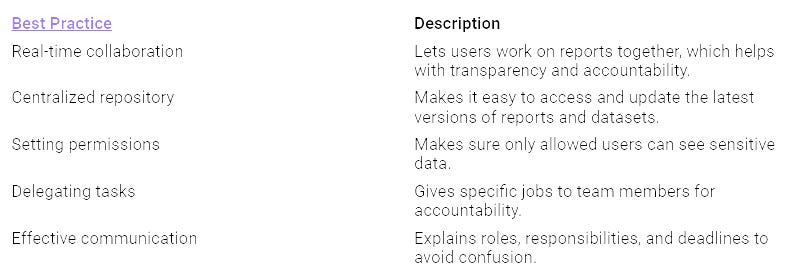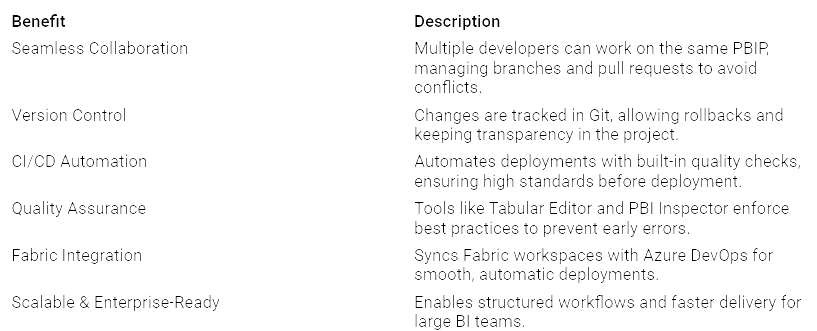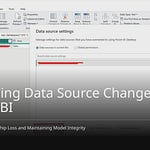In Power BI, things can get messy. Teams often deal with changes that overlap, data that is not the same, and poor communication. You may feel trapped in a cycle of “hope-based” deployments. This can cause frustration and mistakes. That’s why structured collaboration is important. By using PBIP, you can have dependable deployments that help teamwork. With tools like version control and better report formats, PBIP makes your Power BI collaboration more reliable.
Key Takeaways
Use Power BI workspaces to make a main place for sharing reports and dashboards. This helps teamwork and creativity.
Set up clear ways to talk using tools like Microsoft Teams. This keeps everyone updated and involved in the project.
Use real-time data visuals to make fast, smart choices. This can improve customer experiences and how well things run.
Use PBIP for organized deployments. This helps with version control and teamwork among members.
Use automation to lower mistakes and boost efficiency. This lets your team focus on data analysis instead of boring tasks.
Power BI Workspaces
Creating a Collaborative Environment
Power BI workspaces are very important for teamwork. They give a central place to share reports, dashboards, and datasets. This setup lets many users work together at the same time. It makes sharing ideas and insights easier. Here are some key features of Power BI workspaces that help teamwork:
By using these features, you can build a teamwork-friendly environment that supports creativity and cooperation.
Managing Access and Permissions
Managing access and permissions is very important for keeping data safe while encouraging teamwork. Here are some good ways to keep your workspace secure:
Train Users on Their Roles and Responsibilities: Ensure everyone knows their roles in the workspace.
Utilize Workspace Apps for Broader Distribution: Use apps for viewing instead of giving direct access to the workspace.
Implement Row-Level Security (RLS): Protect data at the row level for different users to keep sensitive information safe.
Be Cautious with External Sharing: Limit access for outside users and make sure shared data is not sensitive.
Document Your Setup: Keep a record of who has access and why, including any RLS roles.
Monitor Usage and Optimize: Use usage metrics to check and improve workspace content.
By following these steps, you can manage access and permissions well. This keeps your Power BI teamwork safe and effective.
Best Practices for Power BI Collaboration
Clear Communication Channels
Having clear communication channels is very important for teamwork in Power BI projects. When you keep everyone updated about changes and new features, it creates a transparent environment. This helps team members give feedback, which is key for making things better.
Tip: Use tools like Microsoft Teams to have discussions and share reports easily. This keeps conversations organized and makes sure everyone knows what’s happening.
Here are some good practices to improve communication in your Power BI setup:
By using these practices, you can greatly improve how your team works together and analyze data more efficiently.
Collaborative Goals
Setting collaborative goals is another important strategy for successful Power BI projects. When you set clear goals, you help your team focus on a common purpose. This focus not only improves attention but also encourages team members to engage.
Here are some benefits of setting collaborative goals:
Alignment and Focus: Clear project goals help team efforts stay on track.
Team Engagement: Involving team members in setting goals builds ownership and commitment.
Building Trust and Rapport: Shared goals create trust, leading to better communication and teamwork.
Using Power BI to track Objectives and Key Results (OKRs) can help show progress and find trends. This method improves how you set and track goals.
By focusing on collaborative goals, you can improve teamwork tools and enhance data analysis in your organization. This leads to better, data-driven decisions and boosts your team’s performance.
Real-time Data Visualization
Benefits of Real-time Insights
Real-time data visualization can change how you make choices. With quick access to the latest data, you can see trends and chances faster than before. Here are some main benefits:
Speedy Decision-Making: You can react fast to market changes, giving your business an advantage.
Enhanced Customer Experience: Real-time insights help create personal interactions and solve problems quickly.
Operational Efficiency: You can improve processes and support a data-focused culture in your organization.
By using real-time data, you lower risks and get better results. This ability helps you make smart, data-supported choices that can greatly affect your business.
Leveraging Live Data
To use live data well in your Power BI reports, you need to set up some technical needs. First, make sure your dataset connects to an on-premises data gateway. This link allows for real-time data gathering and analysis. Here’s what you need:
The report must be published to a workspace with Premium or Embedded capacity.
Turn on Automatic Page Refresh in the capacity settings to keep your reports current.
Real-time dashboards can show important business events. For example, they can display sudden increases in customer complaints, letting you fix issues before they grow. Here’s a quick look at how live data can improve different business areas:
By adding real-time data visualization to your Power BI teamwork, you can improve your decision-making and achieve better business results.
Governance and Automation
PBIP for Structured Deployments
When you think about structured deployments in Power BI, PBIP (Power BI Project) is very helpful. This file format uses a modular approach. It makes it easier for you to manage your projects. Here’s how PBIP improves your deployment process:
Modular Structure: PBIP splits projects into smaller files. This makes it easier to track changes and work with your team.
Version Control: You can manage different versions of your reports and datasets easily. This feature helps avoid conflicts and keeps everyone informed.
Integration with CI/CD Pipelines: PBIP works well with tools like TMDL and TMSL. This connection lets you automate your deployment processes, making them quicker and more reliable.
Using PBIP, you can create a smooth reporting process that helps teamwork among developers. Many team members can work on the same project without getting in each other’s way. For example, one user might change the semantic model in Power BI Desktop while another updates reports in Fabric Workspace. They can both create pull requests, and the team lead can check these changes before merging them. This workflow promotes teamwork and keeps high standards throughout the project.
Here’s a quick look at the benefits of using PBIP for structured deployments:
Automation as a Silent Reviewer
Automation is very important for making your Power BI workflows more reliable. By automating tasks, you can greatly reduce human error and improve data analysis speed. Here’s how automation can help:
Enhanced Efficiency: Automation speeds up data processing and reporting. You won’t need to spend time on repetitive tasks, letting you focus on more important activities.
Error Reduction: Automated workflows ensure consistency and accuracy. This lowers the risk of human error, which can cause costly mistakes in your reports.
Increased Reliability: With automation, you can trust that your results are correct every time. This reliability helps you make better decisions.
Think about some common automation tasks in Power BI:
Scheduled report generation
Easy integration with other tools
By using these automated processes, you create data-driven workflows that support your team’s goals. You can also set up alerts to notify you of any problems, like failed dataset refreshes. This proactive approach helps you keep high standards and ensures that your reports are always current.
Here’s a summary of the measurable benefits of automation in Power BI:
In short, using structured teamwork and rules in Power BI can change how your team works. Here are some important strategies to think about:
Utilize Power BI Workspaces: Build a place that helps everyone work together.
Establish Clear Communication: Keep everyone updated to avoid confusion and boost involvement.
Leverage Real-time Data: Make smart choices quickly with the latest information.
Adopt PBIP for Deployments: Simplify your steps for trustworthy and checkable results.
By focusing on these strategies, you can improve teamwork and data analysis. Remember, a well-managed Power BI setup not only increases productivity but also creates trust in your data. So, why not start using these strategies today? Your team—and your data—will appreciate it!
Tip: Think about training resources to help your team use Power BI better. Hands-on learning can really help!
FAQ
What is Power BI collaboration?
Power BI collaboration is how teams work together using Power BI tools. It means sharing reports, dashboards, and datasets. This helps teams make better decisions based on data.
How can I improve communication in my Power BI team?
You can improve communication by using tools like Microsoft Teams for chats. Giving regular updates and having clear roles keeps everyone informed and involved.
What are the benefits of using PBIP?
PBIP makes your Power BI teamwork easier. It offers version control, modular project management, and works well with CI/CD pipelines. This leads to reliable and efficient deployments.
How does automation help in Power BI?
Automation cuts down on human mistakes and speeds up data processing. It lets you focus on analysis instead of doing the same tasks over and over, which boosts efficiency.
Why is governance important in Power BI?
Governance keeps your Power BI teamwork organized and safe. It helps keep data accurate and follows rules while allowing faster and safer new ideas.
















